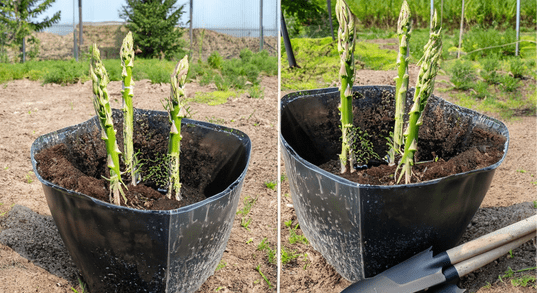Wondering about the hurdles that can affect your asparagus patch? Dive into our guide on the 9 common diseases threatening asparagus plants. What signs should you watch for, and how can you protect your crop? Join us as we unveil the secrets to a thriving asparagus harvest. From early detection to effective remedies, this guide promises you the insights needed to safeguard your asparagus garden and ensure a bountiful yield.
09 Common Disease Asparagus
1. Fusarium Crown and Root Rot
Identification: Fusarium infection presents as wilting, yellowing, and stunted growth of asparagus ferns. Examination of the crowns may reveal a reddish-brown discoloration.
Prevention and Management: Practice crop rotation, ensure well-draining soil, and select disease-resistant asparagus varieties to mitigate Fusarium-related issues.
2. Rust
Identification: Asparagus Rust appears as orange to brown pustules on ferns, causing defoliation and compromising plant health.
Treatment: Implement proper spacing to enhance air circulation, consider fungicidal applications, and choose rust-resistant asparagus varieties.
3. Purple Spot
Identification: Purple Spot manifests as purple lesions with yellow halos on asparagus spears, affecting their quality.
Prevention and Management: Apply fungicides preventively, practice good garden hygiene by removing infected plant material, and select resistant asparagus varieties.
4. Cercospora Leaf Spot
Identification: Recognize Cercospora Leaf Spot through the appearance of small, dark spots with a light center on asparagus ferns.
Treatment: Apply fungicides, ensure proper plant spacing for ventilation, and practice regular inspection to catch early signs of infection.
5. Asparagus Virus
Identification: Asparagus Virus causes yellowing, stunting, and distorted growth in asparagus plants.
Prevention and Management: Practice strict sanitation measures, remove infected plants promptly, and select virus-resistant asparagus varieties.
6. Asparagus Decline
Identification: Asparagus Decline is marked by wilting, reduced spear production, and overall plant decline.
Treatment: Implement proper soil drainage, practice crop rotation, and choose disease-resistant asparagus cultivars.
7. Botrytis Blight
Identification: Botrytis Blight leads to brown lesions on asparagus spears and ferns, often accompanied by a fuzzy gray mold.
Prevention and Management: Ensure proper air circulation, avoid overhead irrigation, and promptly remove and discard infected plant material.
8. Phytophthora Crown and Root Rot
Identification: Phytophthora infection causes crown discoloration, wilting, and eventual collapse of asparagus plants.
Treatment: Improve soil drainage, avoid waterlogged conditions, and consider fungicidal applications for prevention.
9. Pythium Root Rot
Identification: Pythium Root Rot results in rotting of asparagus roots, leading to wilting and yellowing of ferns.
Prevention and Management: Enhance soil drainage, avoid overwatering, and consider the use of fungicides to control Pythium-related issues.
Understanding the signs and implementing effective strategies for prevention and management equips you to safeguard your asparagus garden against common diseases. In the following section, we’ll explore preventive measures and Integrated Disease Management (IDM) strategies to ensure a thriving and disease-resistant asparagus harvest.
Conclusion:
Investing in the health of your asparagus patch is key to a flourishing harvest. By recognizing the signs and understanding the preventive measures for common diseases, you’ve taken the first step to ensure a robust and disease-resistant garden. Now, armed with insights on Fusarium to Pythium, your asparagus cultivation journey is set for success. Stay vigilant, follow best practices, and enjoy the bountiful yields from your thriving asparagus garden. Happy harvesting



